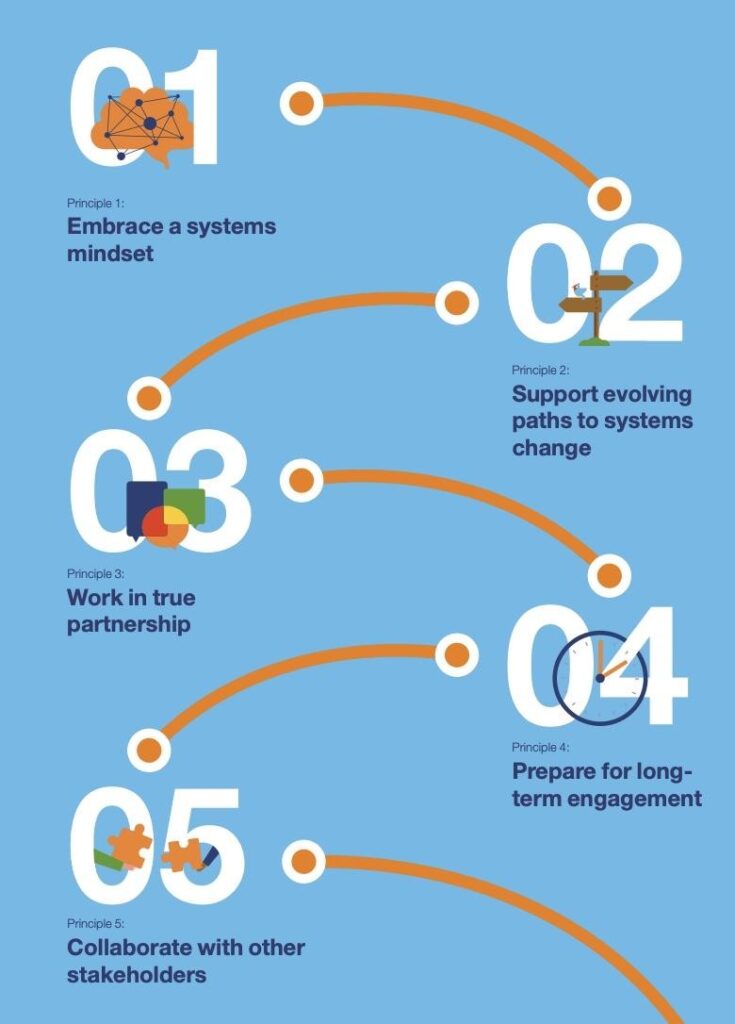Getting started on designing a philanthropy innovation ecosystem agenda

“We are living through one of those rare periods that come along perhaps once every five or six decades, where a profound and permanent readjustment is taking place. What complex systems theorists call a ‘phase transition.’ All kinds of institutions, sectors, conventions, and power relationships are being upended. It is a period of immense anxiety for those who fear the future, and dizzying excitement for those eager to jettison the past.” (James Stauch, “Sh*t’s Getting Real: Environmental Scan 2022”, Calgary Foundation (2022)
“The speed of systems change efforts is being out-paced by galloping environmental degradation and combusting societal fabric. Much better approaches are needed to address the scale and complexity associated with transformation. In effect, we need to transform our approach to transformation.” (‘Convening Transformation Systems to Achieve System Transformation”, Waddock, Waddell et al, Journal of awareness-Based Systems Change, vol. 1, no. 2, pp 77-100, 2021)
The very good news is that the global philanthropy sector is in the midst of a ‘phase transition’. In turn, this creates a strategic window of opportunity for the coalescing philanthropy support organisation (PSO) community to think about how it embraces a transforming approach to the future of philanthropy. And ask: How can it be a catalyst for change?
For most of the 20th century, philanthropy remained a stable and conserving force favouring status-providing institutions (universities, research institutions, arts and cultural organisations). The early 21st century, partially driven by generational change, the influence of tech and venture wealth accumulation and entrepreneurship, has unleashed a wave of philanthropic change.
Now the pace of change is picking up, combining the mutually-reinforcing influences of energised global social movements (Occupy, Black Lives Matter, Me Too, Idle No More, Climate Emergency, etc), COVID-19, and the emergence of promising theories of change honed by data-verified impact.
In March the IPCC warned us that society must move from slow-poke change to hyper-transformation. Philanthropy, successfully enabled, can play a vital interim support role in ensuring the planet urgently achieves a socially just and inclusive net-zero transition.
Other societal actors are grappling with how to fill the new roles for co-building innovative on-ramps and transition platforms. The enabling role of the global private sector remains fledgling as it is only starting the shift to stakeholder capitalism. And the public sector, as academic strategists such as the UCL’s Rainer Kattel and Mariana Mazzucato note, is just embarking to build, or re-build, the needed change capabilities of transition-agility and state entrepreneurial smarts.
Philanthropy holds an early stage transition-optimum advantage endowed with its discretionary resources, agility and the broadening base of knowledge and capability building PSOs supporting it.
Given this context, I suggest that the immediate agenda for the PSO community should be threefold:
Firstly, create and brand an action plan for a transnational Philanthropy Innovation Ecosystem (PIE) that will underpin and support the emergence of a philanthropic sector, allied with PSOs, that is capable of investing in transformational change led by frontline changemakers.
Secondly, co-create, with philanthropy, the core principles that PIE will be advancing for transformational philanthropy.
Thirdly, commit to building the Philanthropy Innovation Ecosystem as “relational infrastructure”.
1) Action Plan
The PIE action plan could be composed of the following innovation ecosystem roles, lightly sketched here, drawn from MIT’s innovation ecosystem work:
- Visioning: Producing a new vision, narrative and mission for philanthropy and its PSO allies
- Innovating: Build new adaptive models for how philanthropy can identify, develop and experiment in new ways of supporting the deployment of impactful socially inclusive net-zero strategies
- Connecting: Innovation ecosystems depend on linking together diverse participants by supporting a range of roles like relationship brokering, trust-building, and network-building
- Knowledge Sharing: designing and enabling how knowledge is shared across and among sectors, domains, organisations in ways that accelerates producing innovation and its diffusion
- Capacity Building: an innovative philanthropic sector will be doing things in new ways, building on new mindsets, skills and capabilities and relying on everyone immersing themselves in ongoing professional and capability development
- Convening and Facilitating: moving past traditional roles and building new norms, partnerships and collaborations requires effective ways to convene allied actors in productive workshops or taskforces that could lead to important longer term innovative platforms for supporting transition and inventing new social technologies (in the sense of facilitating new social behaviors and norms) expediting positive change
2) Core Principles
The principles for a transformational philanthropy sector have been widely discussed and they echo the action plan. In 2020, Catalyst 2030 identified five tenets designed to support a systems mindset and to recast the philanthropic funding model in practical ways:
- Shift from projects to investing in transformative visions of improved systems
- Join collaborative ecosystems, aligned with other funders joining together to support network of system change leaders
- Commit to long term partnership support
- Invest in learning and capability building
- Embrace sharing power with the resource-seeking actors in the change ecosystem, working in true partnership by acknowledging and mitigating power dynamics
Are there better, stronger ways to articulate these principles? Or add to them? Catalyst 2030 further elaborated on their principles with a call to funders to shift funding practices. German foundations have articulated Nine Considerations for the Foundation of the Future.
3) Relational Infrastructure
If the PIE action plan is to work, the diverse expertise of the PSO community will have to operate in a highly synergistic manner, unlocking and diffusing the power of its shared vision. That means collaborating in highly harmonious and noncompetitive ways that spawn a relational infrastructure underpinning the philanthropic innovation ecosystem. The best definition of relational infrastructure comes from Sam Rye, who coined the concept while working on living labs:
Relational infrastructure refers to the social connections, interactions, and collective intelligence that underpin a community, network or group’s ability to collaborate, solve problems, and drive change. It is an emergent framework of trust, shared values, and common goals that allows individuals, groups, and organisations to work together effectively, pool their resources, and amplify their impact. A strong relational infrastructure can enable organisations and communities to overcome challenges, build resilience, and create sustainable social, economic, and environmental value and outcomes.
Carpe Diem
Philanthropy can play a much more impactful role at a critical time. To operate anywhere near the speed and scale that the role demands, philanthropy necessarily will partner with, and depend on, a PSO-supported innovation ecosystem operating with the best characteristics of dynamic relational infrastructure. To achieve this, we need to be more intentional in defining our goals and outlining the steps to accomplish them. Let’s start — and improve on — this initial action agenda.

Source: https://catalyst2030.net/wp-content/uploads/Embracing-Complexity_Report_2020.pdf
This is a series of reflections of PEXcommunity on how philanthropy infrastructure organisations could be catalysts of change. If you would like to contribute to this exploration, join PEX Catalyst Infrastructure.
Authors

